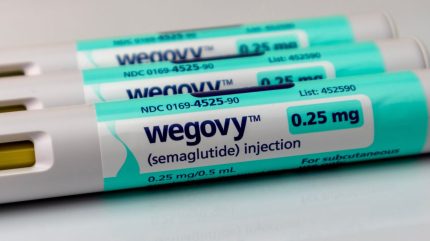
Users of GLP-1 drugs in the US cut their grocery spending by an average of 5.5% in the six months after taking the medication, a study has claimed.
According to research published by Cornell University and consumer-insights group Numerator, US households with at least one GLP-1 user reduce their spending by approximately 6% within six months, with higher-income households cutting their expenditure by nearly 9%.

Discover B2B Marketing That Performs
Combine business intelligence and editorial excellence to reach engaged professionals across 36 leading media platforms.
GLP-1 drugs, such as Wegovy and Ozempic, are gaining popularity in the US and Europe for their appetite-suppressing properties.
The study found that a nearly 6% decline in grocery spending equates to a household on average spending $416 less on groceries. For households earning over $125,000, the annual decrease is $690.
The researchers said: “Our findings highlight the potential for GLP-1 medications to significantly reshape consumer food demand, a trend with increasingly important implications for the food industry as adoption continues to grow.”
The study highlights that users show the “largest” spending reductions in “ultra-processed categories.”

US Tariffs are shifting - will you react or anticipate?
Don’t let policy changes catch you off guard. Stay proactive with real-time data and expert analysis.
By GlobalDataThe spending on products such as chips, baked goods, sides and cookies fell on average between 6.7% and 11.1%.
Additionally, the research said households reduce their expenditure on food-away-from-home, with the amount spent on breakfast down by nearly 4% and on dinner spending by 6%.
By contrast, nutrient-dense options such as yogurt and fresh produce are least affected.
According to the study, the adoption of GLP-1 drugs leads to an overall reduction in household food expenditures, with “significant implications for producers and retailers across the grocery sector”.
This shift presents “challenges and opportunities” for the food sector, the study adds.
The researchers suggested companies dependent on calorie-dense, processed, or indulgent foods “are likely to face declining demand and need to reassess their product portfolios to remain competitive”.
The increased use of GLP-1 drugs has sparked concern about the potential impact on the revenues of packaged-food manufacturers.
Last month, Nestlé launched a pre-meal drink under its Boost brand aimed at GLP-1 drug users in the US.
The Swiss giant is also selling a range of meals in the US designed as a “companion” for those taking GLP-1 weight-loss medication.
The world’s largest food maker describes the Vital Pursuit products as “high in protein, a good source of fibre, contain essential nutrients and … are portion-aligned to a weight loss medication user’s appetite”.
Starting this month, Conagra Brands is putting labels on some of its Healthy Choice products in a bid to catch the eye of users of GLP-1 drugs.
The “On Track” badge will be used on Healthy Choice SKUs that are “high in protein, low in calories and a good source of fibre”, the US manufacturer said, claiming the 26 products are “GLP-1 friendly”.





